More than a story, an intimate testimony.
Every land you set foot in comes alive with your presence,
As if you are rain blessing the earth’s plains.
The eyes yearn for your beauty, a delightful sight,
As if you are flowers blooming in people’s gaze.
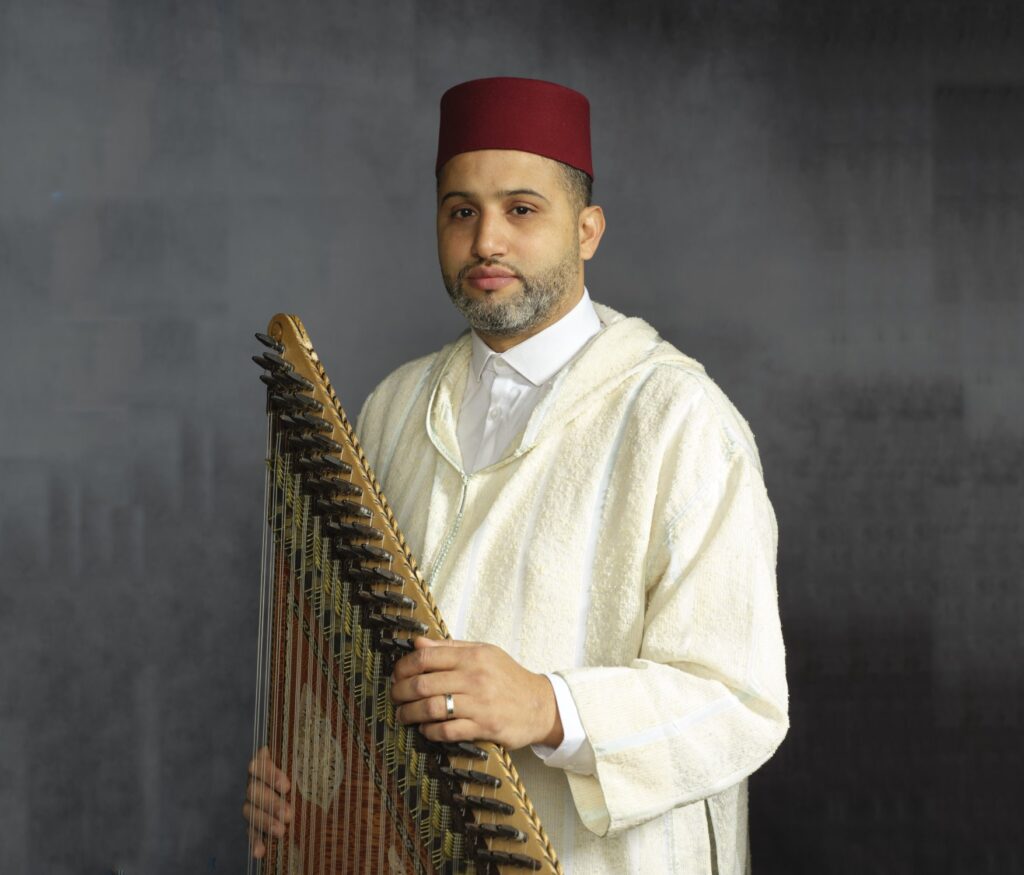
Song of roots
Although Ahmed’s journey began as a musician, it was his exceptional voice—capturing the hearts of audiences from an early age—that emerged as the soul of his artistry. Today, Ahmed is renowned for his unique fusion of Andalusian and Maghrebi musical traditions, blended with elements of Flamenco.
His music is a testament not only to his exceptional talent but also to his profound reverence for the diverse traditional Moroccan musical heritage that has shaped his journey.
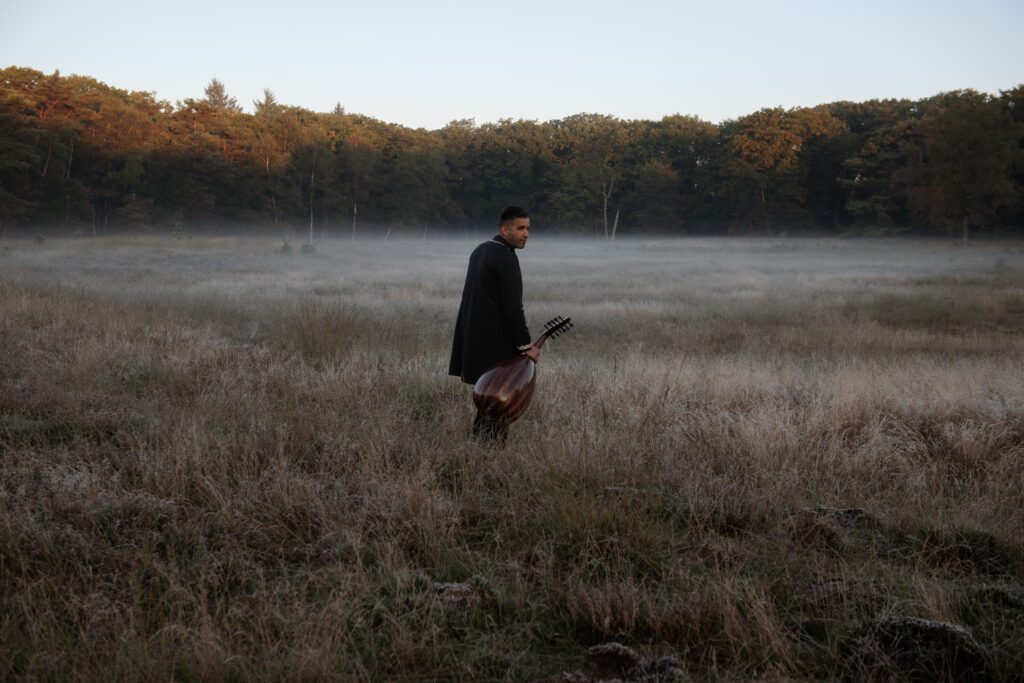
A voice is born
Born in Tangier, Morocco in 1983, Ahmed Elmaai’s journey into music began at a very young age, nurtured by a family with a profound appreciation for the art. Encouraged by his father Mostapha May Allâh have mercy upon his soul, Ahmed enrolled in the National Conservatory of Tangier at nine years old.
Initially drawn to Oriental and Sufi music, he soon discovered the depth and beauty of Andalusian music, as well as its poetry, melodies, and rhythms which became a cornerstone of his artistic identity.
His natural talent and dedication quickly set him apart, earning him a place in the conservatory’s student orchestra during his first year. That same year, he won the “Best Singer” award at a national festival, becoming the youngest ever to achieve this distinction. These formative years laid the foundation for a career defined by both technical mastery and a passion for blending musical traditions.
As part of his training, Ahmed became proficient in several instruments. He mastered the violin and oud and taught himself to play the qanun.
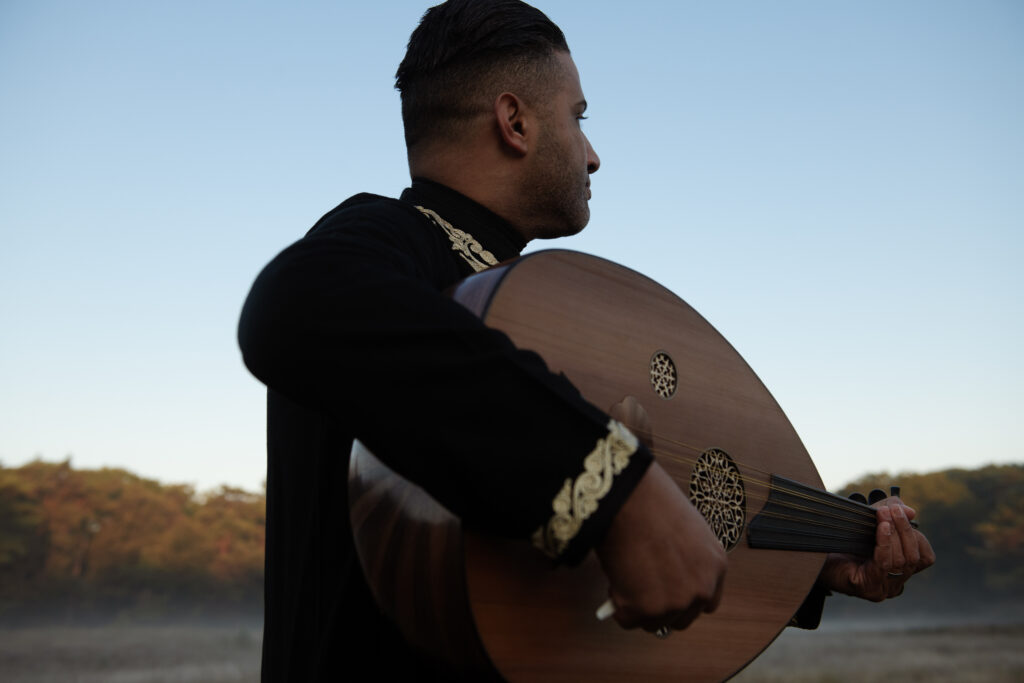
Companion of the soul
As he immersed himself in practice, Ahmed soon discovered that the oud was not merely a virtuous instrument, but a profound ally in his musical journey. Its rich tones and intricate strings became an invaluable aid to his singing, enhancing his vocal expression and providing a perfect foundation for his creativity.
Particularly as he began composing his own melodies, the oud revealed itself as an essential companion, guiding his artistic vision and deepening his connection to the music.
The oud is my companion, providing me solace, contemplation, and a profound connection. Its melodies open the heart, evoke deep emotions, and create a space for spiritual connection.
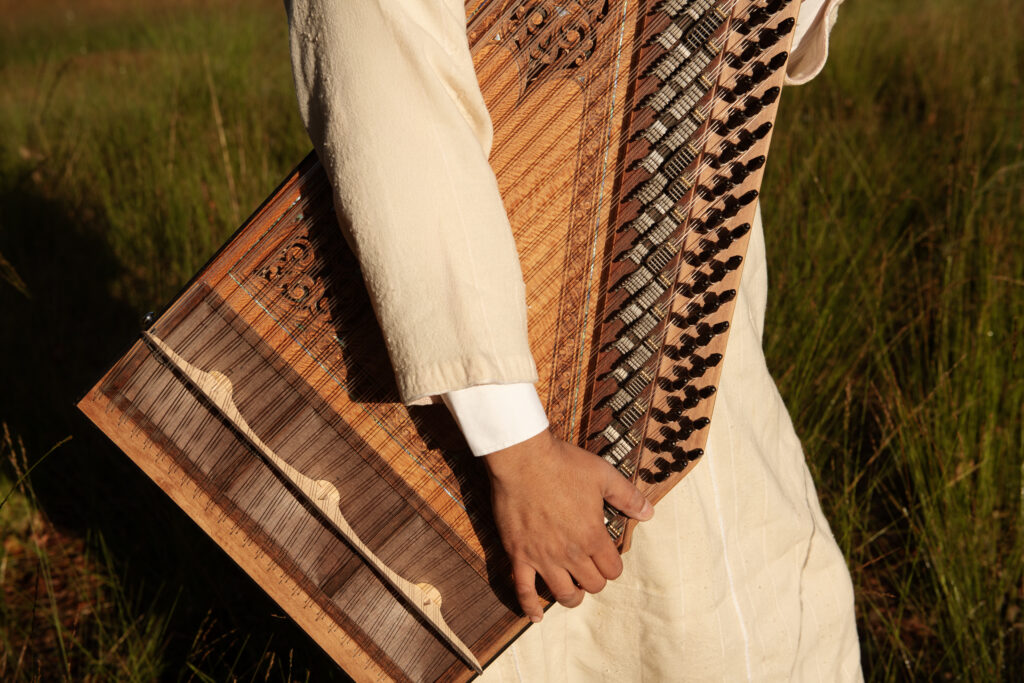
Where instruments meet
Ahmed was captivated by the unique aura of the qanun, drawn to its sophisticated design and the complexity of its play. Eager to learn more, he sought out qanun teachers and players in Morocco, but found that reliable guidance was scarce. This led him to focus more on the oud instead.
However, after moving to Belgium in 2002, Ahmed’s passion for the qanun reignited. He took it upon himself to learn and practice the instrument, dedicating many years to mastering it, eventually becoming one of its most skilled players.
By his early teens, Ahmed was performing professionally with teachers and orchestras in several festivals and concerts. After seven years at the Tangier Conservatory, he continued his musical education at the Academy of Music in Brussels, where he focused on classical violin.
His experience enriched his understanding of music, allowing him to integrate Andalusian, Gharnati, and Chgouri traditions with Western and Flamenco influences.
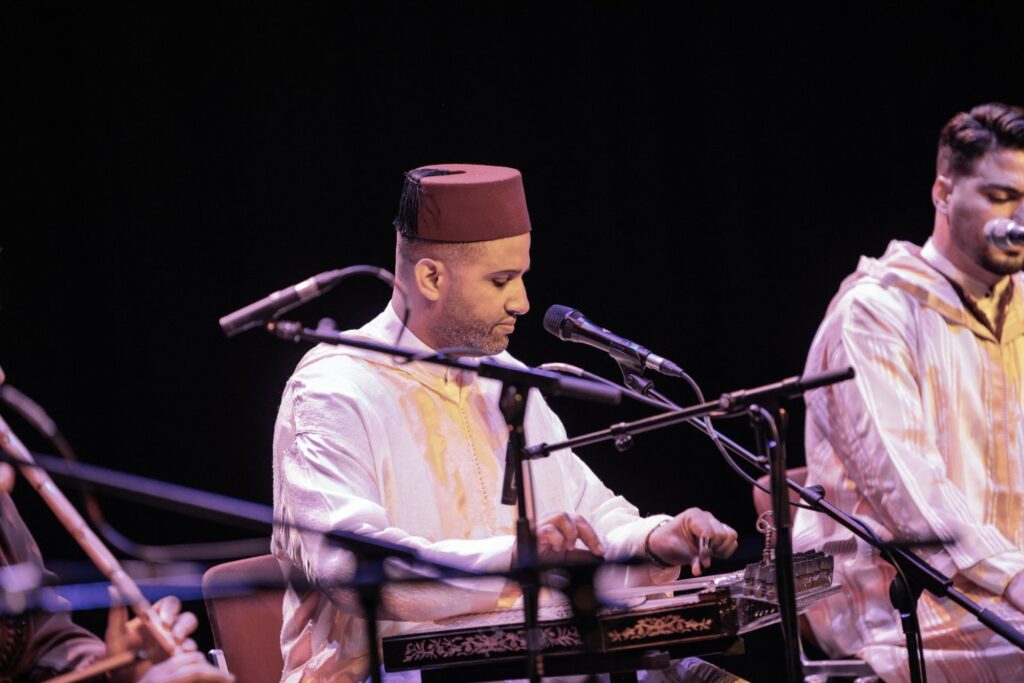
The origins of musical Andalusia
Andalusian music, often hailed as the foundation of numerous musical genres, was established by the legendary Ziryab, a 9th-century polymath, musician, and composer from Baghdad. Ziryab brought his extensive knowledge of music, poetry, and culture to the courts of Al-Andalus (modern-day Spain), where he transformed the musical landscape by introducing new instruments, styles, and compositions.
His groundbreaking innovations formed the cornerstone of Andalusian music, blending Arabic, Berber, and Iberian influences into a harmonious whole.
From this rich tradition, three distinct genres—Chgouri, Flamenco, and Gharnati—emerged, each considered a “child” of Andalusian music. While they retain the essence of their origins, each genre has evolved uniquely within its own cultural and geographical context.
The poetic depth, intricate melodies, and rhythmic complexity of Andalusian music continue to influence these genres, solidifying its lasting legacy as the “mother” of these art forms.

